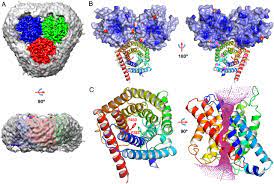The stoma is a window for material and information exchange between plant and environment. Stomata mediate the adaptation of plants to the external environment by sensing and decoding various environmental signals, such as drought, CO2, and ozone. In addition, stomata are the invasion channels of pathogenic microorganisms and participate in the immune response of plant disease resistance. Stomata control CO2 uptake and water transpiration, and their opening and closing are highly regulated. Therefore, the mechanism analysis of plant stomatal sensing important external signal molecules is of great significance for crop drought resistance, stable grain yield, and solving water shortage.

Stomata are formed by specialized guard cells, which regulate stomatal opening and closing by decoding various environmental signals and integrating them into the changes of turgor pressure of guard cells. The change of turgor pressure of guard cells is mainly realized by intracellular ion transmembrane transport, which is regulated by many different signaling pathways. Two key ion channels, SLAC1 and QUAC1, are located at the junction of multiple regulatory pathways and mediate slow (s) and fast (R) anion currents in guard cells, respectively. The anion efflux from guard cells is a key step to initiate stomatal closure. The molecular mechanism and dynamic process of how guard cells perceive, decode and respond to different environmental signals are still unclear.
Chen Yuhang, a researcher of Institute of genetics and developmental biology, Chinese Academy of Sciences, analyzed the three-dimensional structure of SLAC1 in higher plants by Cryo-EM, and further systematically identified the key phosphorylation sites of the SLAC1 channel by electrophysiological techniques, which laid a foundation for elucidating the molecular mechanism of SLAC1 activation. The related research results are published on PNAs with the title of structure and activity of slac1 channels for statistical signaling in leaves.
Reference
Deng YN, Kashtoh H, Wang Q, et al. Structure and activity of SLAC1 channels for stomatal signaling in leaves. Proc Natl Acad Sci U S A. 2021 May 4;118(18):e2015151118. doi: 10.1073/pnas.2015151118. PMID: 33926963; PMCID: PMC8106318.